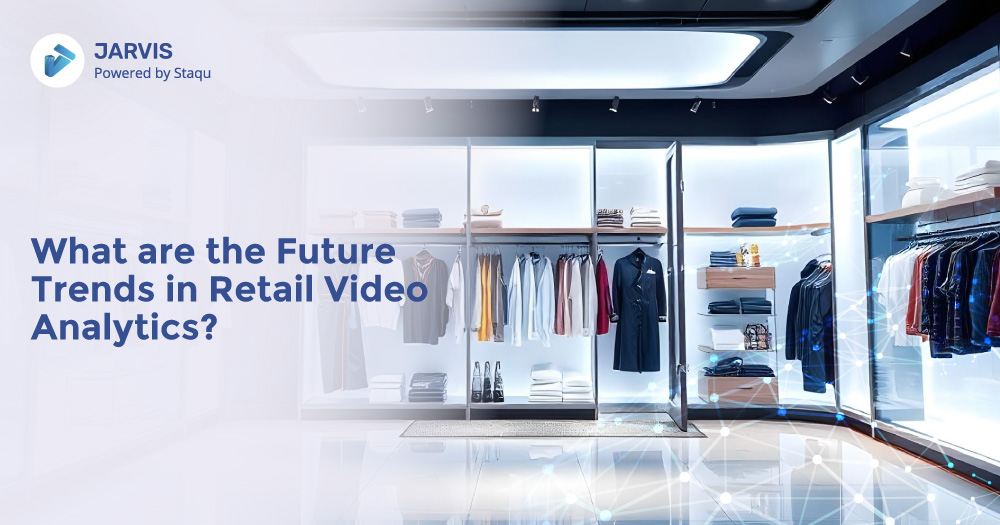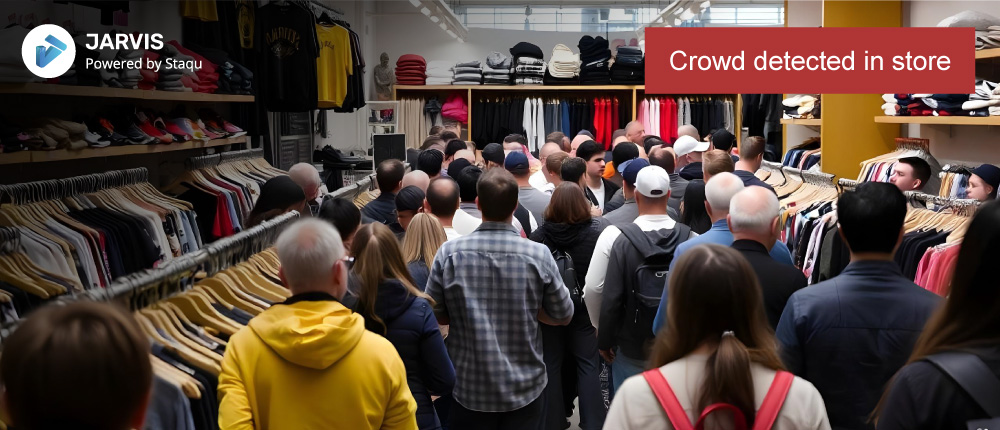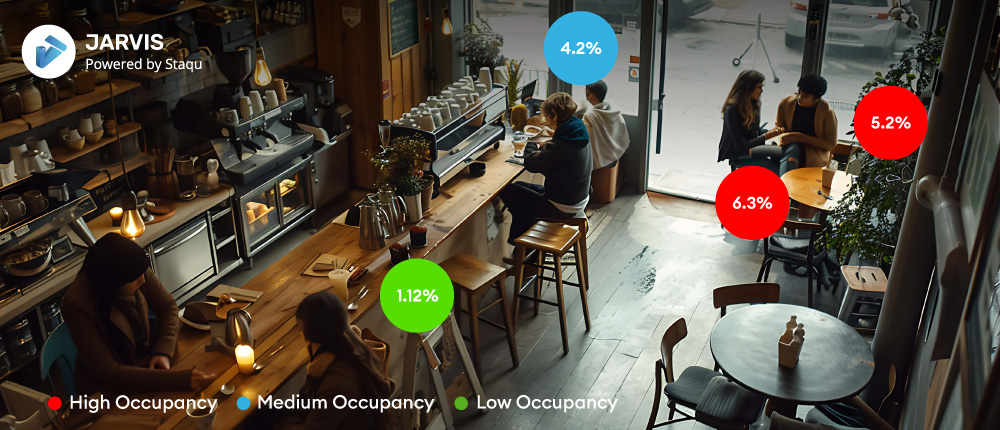What are the Future Trends in Retail Video Analytics?

Retail is undergoing a digital transformation, and video analytics is playing a pivotal role in shaping the future of the industry. From enhancing customer experiences to preventing theft, video analytics is no longer just about security; it’s about driving operational efficiency and informed decision-making. As retailers face increasing competition, the ability to leverage video analytics to provide real-time insights, predict trends, and optimize operations is becoming indispensable. This article explores the future trends in retail video analytics and how these advancements will impact the retail landscape.
The Current State of Retail Video Analytics
Retailers have long relied on video surveillance for security purposes, but today’s video analytics go far beyond monitoring for shoplifters. Traditional uses of video analytics have expanded to include customer behavior tracking, heatmap generation, queue management, and more. By analyzing video data, retailers can now gain deep insights into how customers interact with their store environment, identify inefficiencies, and improve the overall shopping experience.
Key use cases of video analytics today include:
- Customer behavior tracking: Analyzing how customers move through the store, which products they engage with, and the time spent in each area.
- Loss prevention: Detecting theft or fraud by identifying unusual behavior patterns in real-time.
- Inventory management: Monitoring stock levels and predicting when items need to be replenished.
However, as technology evolves, the potential of retail video analytics is set to grow exponentially. Emerging trends such as AI integration, real-time data processing, and predictive analytics are paving the way for even more advanced capabilities.
Trend 1: AI-Driven Video Analytics
Artificial Intelligence (AI) is revolutionizing the way video analytics functions in retail. With the help of AI, video analytics systems can now interpret vast amounts of data faster and more accurately tha ever before. This allows retailers to detect patterns and anomalies that would be missed by human operators.
AI algorithms in video analytics can perform tasks like:
- Facial recognition: Identifying known customers to provide personalized service or spotting individuals banned from the store.
- Behavior analysis: Recognizing suspicious activities such as shoplifting or aggressive behavior and flagging them in real time.
- Customer segmentation: Classifying shoppers by age, gender, or emotional state, enabling retailers to tailor marketing strategies or store layouts accordingly. Machine learning plays a significant role here as well, as it allows video analytics systems to learn from historical data and improve over time. AI-driven analytics can predict customer preferences, suggest promotions, and optimize in-store arrangements, ultimately enhancing the retail experience.
Trend 2: Real-Time Analytics and Alerts
In the fast-paced world of retail, real-time data is critical. Video analytics systems are evolving to provide real-time insights that enable immediate responses to unfolding situations. This could be anything from alerting staff to long queues at the checkout to notifying security teams about suspicious behavior.
Retailers are also leveraging real-time alerts to manage store operations more effectively. For example:
- Queue management systems can use real-time video data to monitor the number of people in line and automatically open new registers when needed.
- Crowd control systems can detect overcrowded areas and notify store managers to redistribute staff or adjust traffic flow.
- Security systems can instantly alert security personnel about potential threats, reducing response time and mitigating risks.

Download eguide
Real-time video analytics also help retailers create more efficient staffing schedules, reducing labor costs while maintaining high levels of customer service.
Trend 3: Integrating Video Analytics with IoT Devices
The Internet of Things (IoT) is increasingly integrated with video analytics systems to provide even deeper insights into retail environments. IoT devices such as smart shelves, beacons, and RFID tags can collect vast amounts of data, which can then be analyzed alongside video footage to provide a comprehensive view of the store.
Examples of video analytics integration with IoT include:
- Smart shelves that monitor stock levels in real-time, ensuring that products are always available and automatically triggering reorders when necessary.
- Beacons that track customer movements and provide personalized offers based on their location in the store.
- Automated checkout systems that combine video analytics with RFID technology to allow customers to pay without scanning each item individually.
The integration of video analytics with IoT devices is enabling a more connected, intelligent retail ecosystem that can respond to customer needs more quickly and efficiently.
Trend 4: Predictive Analytics for Inventory and Demand Forecasting
One of the most promising applications of video analytics in retail is predictive analytics. By analyzing historical data and real-time video footage, predictive models can forecast customer behavior and trends, enabling retailers to optimize inventory and meet demand more effectively.
For example:
- Inventory management: Video analytics can predict when certain products will run out based on customer traffic patterns and purchasing behavior, allowing retailers to restock in advance.
- Sales forecasting: By tracking customer movement and interest in specific products, video analytics can predict future sales trends, helping retailers adjust their inventory and promotional strategies accordingly.
Predictive analytics can also help retailers reduce waste by ensuring that perishable items are stocked according to demand, ultimately leading to more efficient inventory management and higher profitability.
Trend 5: Enhanced Security with Video Analytics
Security remains a critical concern for retailers, and video analytics continues to play a central role in safeguarding stores. However, future trends in video analytics are pushing security capabilities to the next level with advanced threat detection and behavior analysis.
AI-powered video analytics can:
- Detect suspicious behavior: Identify loitering, shoplifting, or aggressive actions in real time, allowing security teams to respond quickly.
- Analyze crowd dynamics: Monitor crowd sizes and behaviors, detecting anomalies like panic or potential stampedes in busy retail environments.
- Track known offenders: Use facial recognition to identify individuals who have previously caused issues or are banned from entering the premises.
With these advancements, retailers can create a safer shopping environment for customers and employees while reducing losses due to theft or fraud.
Trend 6: Heatmaps and Customer Behavior Analytics
Heatmaps are a popular tool in retail video analytics, allowing retailers to visualize customer movement and engagement within their stores. By understanding how customers navigate the space, retailers can make data-driven decisions about store layout, product placement, and staffing.
Key benefits of heatmaps in retail include:
- Identifying high-traffic zones: Retailers can optimize product placement in areas where customers naturally spend more time, increasing the likelihood of sales.
- Analyzing underutilized areas: Understanding which parts of the store are underutilized allows retailers to redesign layouts for better flow or create promotional opportunities in those spaces.
- Improving staff allocation: Heatmaps can help store managers allocate staff to the busiest areas, improving customer service and reducing wait times.
Heatmap technology will continue to evolve, offering more precise insights into customer behavior and enabling retailers to create more efficient and effective store environments.
Trend 7: Omnichannel Integration
As the retail industry shifts toward an omnichannel approach, integrating video analytics across multiple channels will become increasingly important. Retailers will need to link data from in-store video analytics with online and mobile platforms to provide a seamless customer experience.
For example:
- Cross-channel insights: Video analytics can track in-store customer behavior and integrate it with online browsing data to offer personalized recommendations, promotions, and experiences across all channels.
- Unified customer profiles: Combining video analytics with CRM data allows retailers to create detailed customer profiles that track both in-store and online behaviors, leading to more targeted marketing strategies.
- Omnichannel customer journey: Retailers can use video analytics to understand how customers move between channels, enabling them to tailor the shopping experience to individual preferences.
The future of video analytics will see an even greater emphasis on cross-channel integration, ensuring that retailers can meet customer expectations in both the digital and physical worlds.
Trend 8: Privacy and Ethical Considerations
As video analytics becomes more pervasive in retail, privacy and ethical concerns will also grow. Retailers must balance the benefits of video analytics with the need to protect customer and employee privacy.
Key considerations include:
- Data protection: Retailers must ensure that video analytics data is stored securely and complies with regulations like the General Data Protection Regulation (GDPR) or the California Consumer Privacy Act (CCPA).
- Anonymization: Retailers should use technologies that anonymize video data, protecting individual identities while still gaining valuable insights.
- Transparency: It’s essential to inform customers and employees about the use of video analytics, ensuring transparency and building trust.
As the technology advances, retailers must stay vigilant about privacy concerns and work to ensure ethical use of video analytics.
The Role of JARVIS in Shaping the Future of Retail Video Analytics
JARVIS, a cutting-edge video analytics solution, is at the forefront of these emerging trends in retail. JARVIS combines AI-driven analytics, real-time data processing, and predictive insights to help retailers optimize operations, improve security, and enhance customer experiences.
Key features of JARVIS include:
- Real-time threat detection: Instant alerts for suspicious behavior or security breaches.
- Customer behavior analysis: Detailed insights into how customers navigate the store and engage with products.
- Predictive analytics: Forecasting demand and optimizing inventory based on customer behavior patterns.
- Cross-channel integration: Linking in-store and online data for a unified view of the customer journey.
By adopting JARVIS, retailers can stay ahead of the curve and capitalize on the future trends in video analytics.
Conclusion
The future of retail video analytics is bright, with AI-driven technologies, real-time insights, and predictive analytics leading the charge. As retailers continue to adopt these advanced solutions, they will be better equipped to enhance security, optimize operations, and create personalized shopping experiences. JARVIS stands out as a leader in this space, offering the tools needed to navigate the evolving retail landscape. By embracing the future of video analytics, retailers can stay competitive and meet the ever-changing demands of their customers.


